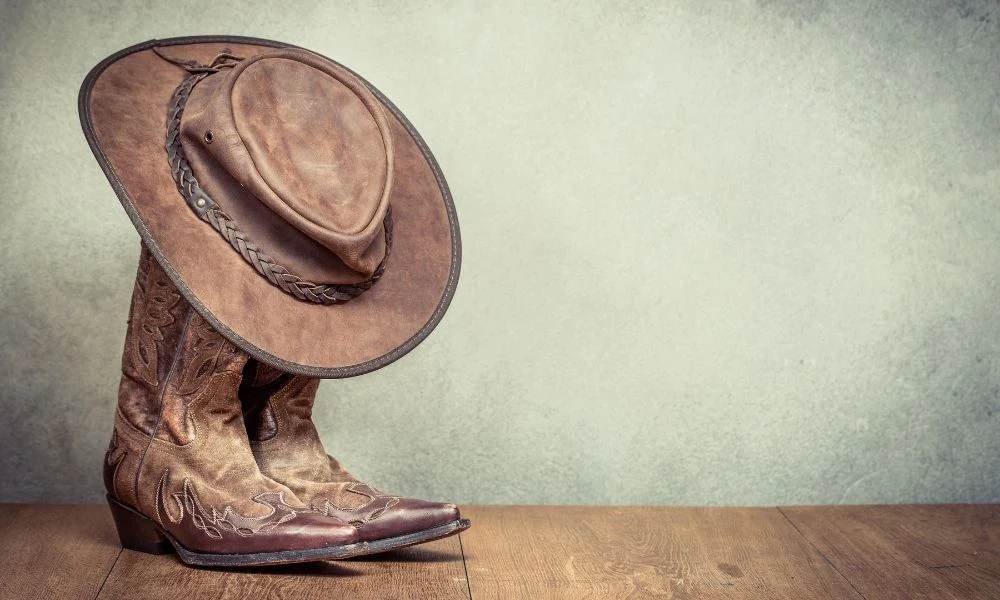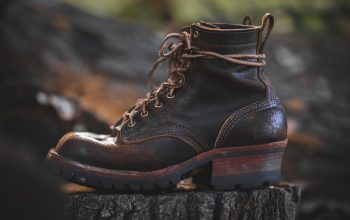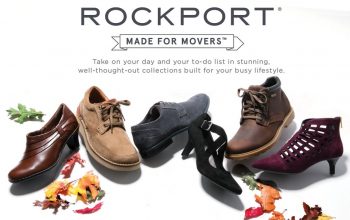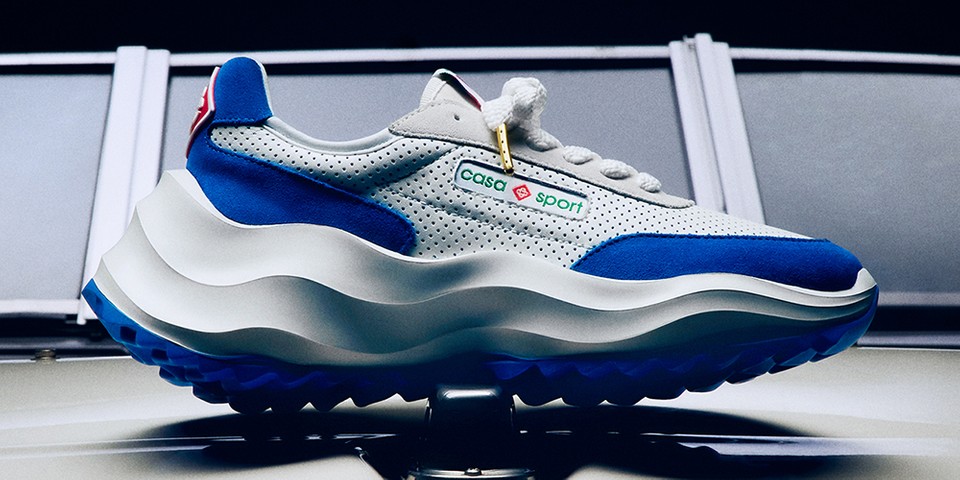Cowboy boots are the ultimate closet staple. They are versatile, practical, and always stylish. However, there is more than one type of cowboy boots, including western boots, roper boots, ranchers boots, buckaroo boots, work boots, packing shoes and fashion or dresses. Before you buy, learn the difference.
Cowboy boots are the hottest footwear of the season. On the runways, in the pages of Vogue magazine, and perhaps most importantly, on the Instagram pages of celebrities known as fashion icons – these boots are showing up in all the right places.
Interestingly enough, cowboy boots were also red hot last season. And this year was just one of many years where cowboy boots were everywhere (and everything). Like jeans, they never really go out of style.
Why is that?
Well, first of all, cowboy boots are utilitarian. They truly do what they were designed to do, and that is protect your feet in all conditions, no matter how rough. That’s probably why in hard times – recessions; high unemployment, political unrest, wars, times of pandemics – we see a resurgence in their popularity.
People may find their extreme toughness reassuring, a symbol of strength in the face of challenges. Perhaps we connect more with cowboys when times are tumultuous – perhaps as symbols of a really tough time in life in American history, but more as examples of the kind of people who are tough enough to win, even.
Cowboy boots represent a certain classic style, and there’s no denying that. There is something stylish about them – and cowboy boots can certainly be stylish – but there is something about them that always signals a certain taste in the wearer. Just like timeless pieces like Burberry scarves, Chanel suits, Converse All-Stars or Levi’s 501 jeans, cowboy boots are always a good investment in a closet.
Cowboy boots are also very versatile. They are gender flexible and can be dressed up or down. Anyone can wear them with anything. Jeans are a great match for cowboy boots, and for everyone, any cut of jeans will do (bootcut, skinny, tapered or simply straight leg). For men, a t-shirt and jeans is effortless and, dare I say it, manly. Swap out the t-shirt for a button-down and make sure your boots are polished (or at least not scuffed) and you’ve got an office or even dinner look.
For women, dresses and skirts, both long and short, look great with cowboy boots. The ruggedness of cowboy boots cuts the sweetness of a dress or skirt and gives your outfit a sense of dimension. Cowboy boots also look cute with denim shorts and leggings. For both men and women, nice cowboy boots look surprisingly good with some suits.
These are just ideas. Cowboy boots are so versatile that I suggest you follow your heart, stop in front of your mirror and wear it proudly if you like the look of your outfit. If no one has worn them with cowboy boots before, you will look cutting edge and possibly start a new trend.
If you’re interested in getting yourself a pair of cowboy boots, but aren’t sure where to start, this article is for you. While the uninformed may think that there is only one type of boot called a “cowboy boot”, you are reading this article because you know better.
Before you go shopping, it’s a good idea to have an idea of the kind (or, if your budget allows, variety) of cowboy boots you’re going to buy. You may be surprised at how many types of cowboy boots there are to choose from, and you’ll definitely have a better idea of which types are best for you. Let’s get started.
First off, what makes a boot a cowboy boot?
While there are several different types of cowboy boots to choose from, most (though not all) cowboy boots have the following in common:
Stitching: The defining feature of cowboy boots – that is, what makes a cowboy boot a cowboy boot, for most people – is the decorative stitching on the shaft. This type of stitching originated as a way to hold the layers of leather that make up the boot together. Today, glue usually does this job.
Scallop: Cowboy boots are distinctly different from other types of riding boots, such as the traditional English riding boots, because they have a more pronounced incline at the top of the shaft in the front and back, giving the top of the boot a curved, or scalloped, look.
Leather: Traditionally, at least, all cowboy boots were made of leather. This has changed, as most styles can now be found in a variety of different materials. However, if you want a classic, you may want to find a leather – or at least a “leather look” boot.

What are the different types of cowboy boots?
The main categories are riding boots, work boots, and fashion or dress boots. We will start with riding boots.
Western
Western style riding boots are probably what most people think of when they hear “cowboy boots”. This is probably because western boots are the original cowboy boots, those that came before all other styles. The features of this traditional cowboy boot include a half inch angled heel, also known as a “Cuban heel” or “riding heel”.
This type of heel was originally designed as a safety feature to help horseback riders stay in the saddle. Even if you don’t ride horses, you may like the look of a high heel on western boots, just as you may prefer to wear high heels over flats.
The classic western boot has a high boot shaft. That means that it sits high on the calf. Today’s Western boots have evolved to have a variety of heights – from very short, almost ankle-high boots, to boots that almost reach the knee.
The traditional fabric for western boots is cowhide, but this is evolving. Western boots are now made of leather; the skin of alligators, snakes, ostriches, or other exotic animals; vinyl, and much more. While decorative stitching is a hallmark of almost all cowboy boots, Western boots are known for being sometimes stitched in particularly elaborate, embellished, and beautiful patterns.
Traditionally, the toe style of western boots is pointed. Why? There are several reasons. First, the pointed toe makes it easier for a person’s foot to hook into the stirrup. Second, this toe shape was the best protection for the cowboy’s piggyback in case a temperamental horse decided to trample on his feet.
Roper
The Roper boot was developed specifically for cowboys who participated in the sport of calf roping. It has a lower heel than the Western boot and the heel is square rather than angled. This heel design is important to calf ropers for several reasons. First, it helps them run faster (an important feature since calves don’t like to be roped and often have to be chased).
Second, it helps to protect the cowboy’s ankles when dismounting in a hurry. The heel of a roped cowboy boot is often referred to as the “walking heel” because it is better suited for walking than the angled heel of a western boot. This is something to consider if you are not a cowboy and tend to do more walking than riding. In terms of boot height, riding boots have a tighter and shorter shaft than western boots. They have a rounded toe shape.
Buckaroo
Among real cowboy boots – that is, cowboy boots worn by actual cowboys and not just fashion icons – Buckaroo riding boots are known to be the shiniest. They have a very tall shaft (over 14 inches tall); a “saddle,” which is an extra piece of leather across the upper; and, often, holes in the scallops to help the wearer pull them on.
One reason the Buckaroo boot is so fancy is that it has an even taller heel (over 2 inches) than the Western boot. Buckaroo boots are also known for their intricate stitching and colors. They come in round toe, square toe and wide square toe styles.
Where did Buckaroos get their name? Apparently the word “Buckaroo” is derived from the Spanish word “vaquero” which means cowboy. Buckaroos are called Buckaroos because they are related to the vaquero, the original cowboys of the Great Basin, which stretches from Oregon and California, Mexico to Wyoming. This part of the region is known for its tall brush, and the tall shafts of the Buckaroos help protect the cowboys’ legs from scrapes and pokes.

Stockman
The main difference between Stockman riding boots and other types of riding boots is that they have a deeper scallop. (The scallop is the indentation at the top of the boot.) Other than that, the Stockman boot is similar to the Roper boot in that it has a comfortable low heel. Like Western work boots, its heel is usually made of rubber. Like western boots, Stockman boots are known for their ornate stitching and sometimes colorful patterns. The toe box of the Stockman is a bit wider than some other cowboy boot styles, such as the Western and Roper.
Western Work
If you are looking for something that is both comfortable and cost effective, and are not so concerned with fancy stitching or other purely aesthetic elements, then western work boots may be the best choice for you. The heels of these boots tend to be low enough to allow for easy walking, and the soles and heels are often made of rubber – another benefit when it comes to comfort and cost.
Other unique features of work boots are soles that have tread patterns for greater traction and cushioned midsoles for extra comfort. As for the height of the shaft, it can be mid-calf or slightly shorter. And the toe shape is usually round or subtly tapered.
Packer
The Packer is a lace-up boot with a high heel designed for riding. Lace-up cowboy boots? If you’ve never heard of such a thing, you’re not alone. The Packer is named after and worn by cowboys who rode pack horses in the mountains.
The laces of the boots hold them securely in place, giving the wearer extra ankle support – handy when you’re constantly jumping up and down on uneven terrain. packers look a lot like other lace-up work boots (but cooler). Their high heel is what sets these work boots apart from other work boots in a significant way.
Cowgirl Boots
Cowboy boots designed specifically for women come in women’s sizes and in some cases, the style and color are considered “feminine”. Other than that, there is no difference between cowgirl cowboy boots and cowboy boots. Cowboy boots have all the same variations. Westerners, Ropers, Packers, etc.
Fashion or Dress Boots
Fashion or dress boots are cowboy boots that are designed for their look more than their function, and, when it comes to looks, all I can say is wow! There are no rules when it comes to color, design, materials involved, boot height, heel type, or toe shape. And, because there are no rules, there is no limit to the variations you will find.
Handmade Boots
Among cowboy boot connoisseurs, there is no comparison between handmade and machine made cowboy boots. And, unlike other types of footwear and apparel, cowboy boots are still made by hand by many manufacturers. Interestingly, the boot and shoe industry is one of the last industries to be industrialized in the United States.
And as far as cowboy boots are concerned, a large number of craftsmen still haven’t succumbed. While you can pay a lot for handmade cowboy boots, you can also get some handmade boots for less money than machine-made ones. There are also a wide variety of handmade – meaning partly made by machine and partly made by hand – boots that you can buy as well. It really takes a lot of shopping around.



